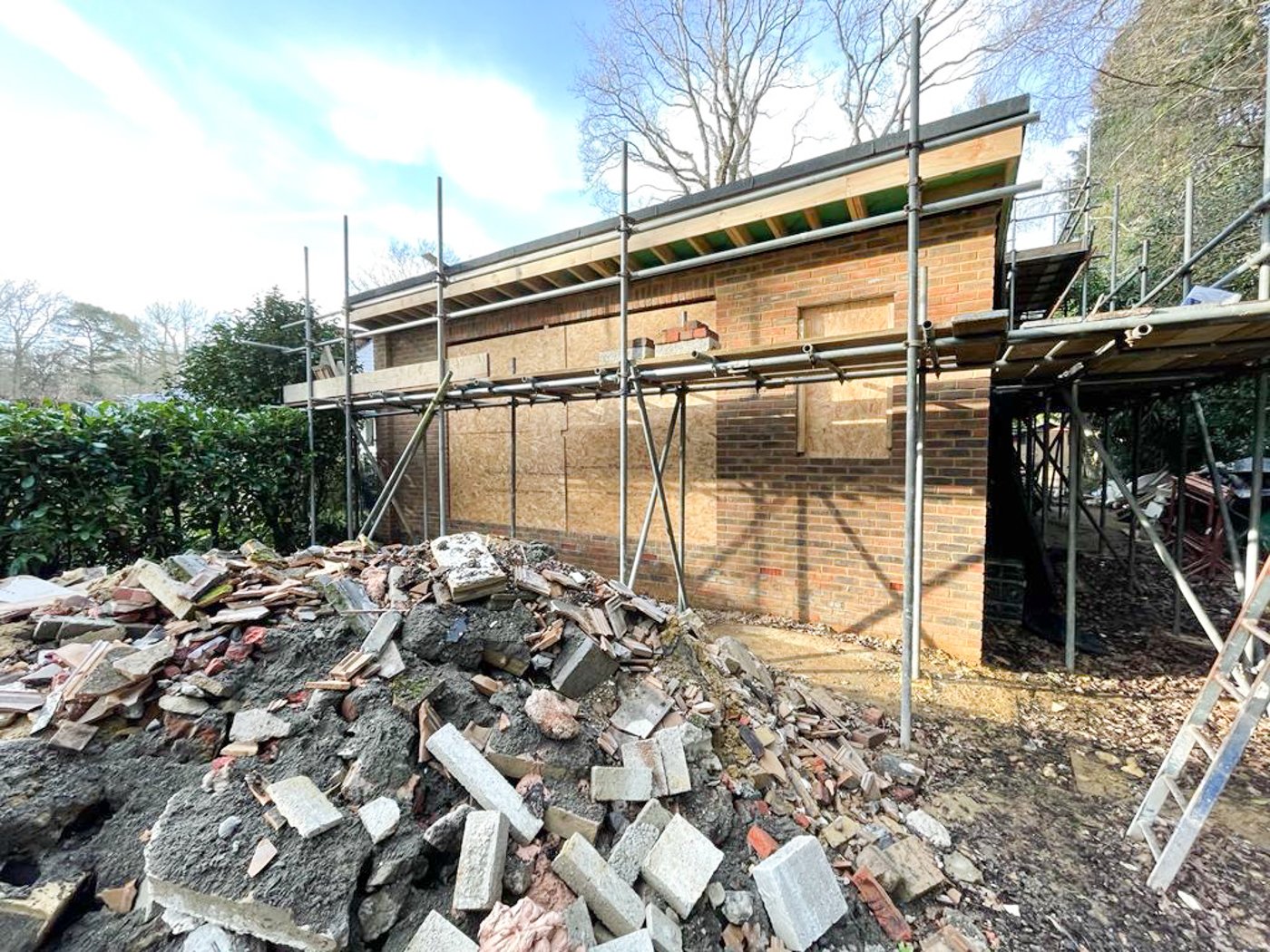Build over agreements: A newbie's guide

Sean Payne
Working on projects across the UK, focusing on energy efficient construction and renovations
Are you in the middle of a house renovation project that has staggered to a halt because of build over agreements? If so, you are not alone.
Many homeowners, including ourselves, encounter this particularly frustrating obstacle building an extension. It’s an obstacle that, if left unchecked, can delay or completely prevent the completion of your renovation project.
In fact, it's a topic that has been discussed many times, while sipping what seems like thousands of cups of tea, in our Reno Club community.
Yet, build over agreement problems do not have to spell the end of your renovation.
In this article, I’ll shed light on some common problems you might face when dealing with build over agreements and provide practical solutions to help you navigate this complex issue.
Whether you are dealing with legal requirements, negotiating with your neighbour, or simply seeking a better understanding of the process, you’ll learn how to bend build over agreements to your will and move forward with your renovation plans.
So, if you are feeling stuck or overwhelmed by build over agreements, read on to discover how you can overcome these obstacles and finally complete the house renovation of your dreams.
A newbie’s guide to build over agreements
What is a build over agreement and when is one needed?
First, in this section, we’ll take a look at exactly what a build over agreement is and how it can affect your project.
Build over agreements are legal contracts between property owners and sewer companies that allow building over or near public sewers. They protect the sewer from damage and ensure access for maintenance.
Build over agreements are normally shorthand for ‘build over or near public sewer agreements’, and are normally required in any case where building is being conducted within 3 metres of a public sewer.
A build over agreement is normally issued by your local water company - for example Thames or Wessex Water - giving you permission to build over or near public sewer pipes. These agreements are normally issued after an application is made and your local water company approves construction details.
When did build over agreements come into force?
Build over agreements came into force in 2011 and 2012 after water companies were awarded many existing private areas of sewer lines. This was intended to give better control and monitoring over sewer lines that serviced multiple properties and crossed long distances.
Despite ownership being passed over, it should be noted that many water companies still do not have accurate maps of many of these public sewer assets and it is still common for public sewers to be missing from sewer maps altogether!
This makes looking for public sewers a very important requirement during a measured survey or inspection of your property before you plan your project.
Do I need a build over agreement for my project?
Knowing early on if you will need a build over agreement for common projects such as rear or side house extensions will get you well on your way to success. As discussed above, you will need a build over agreement if you are within 3 metres of a public sewer pipe or if you are building within 1 metre of a private sewer crossing your ownership boundary.
Two types of agreement are available, a self-certified agreement if you comply by certain requirements or - more commonly - an approved build over agreement.
How can I find out about public sewers on my property?
You can use a handful of methods to determine whether you have a public sewer on your property and the route it takes.
The most reliable and accurate method would be to appoint a drainage surveyor to conduct a CCTV survey. This type of survey for piping physically runs a long cable with a camera at the front down your property’s drainage, which can be used to map out the routes and distances the drainages and sewers cover.
For some sites, it may be possible to request a sewer map from your local water company or even to track the route of a sewer from manholes on your property. It should be noted, however - as discussed above - that this may not be entirely accurate and does present some risk.
How should I plan my project around a public sewer line?
Water companies have standard construction diagrams showing their preferred solutions to building near or over public sewers. These should be followed for small domestic projects such as house extensions as far as possible in order to obtain a build over agreement.
These details can be seen on water companies’ websites.
Any external walls and foundations can be no closer than 500mm from the nearest edge of a public sewer. If your project builds over a public sewer, it should do so at as much of a perpendicular angle as possible, with any parallel foundations being no closer than 1m to the nearest edge of the public sewer if possible.
What happens if I don’t secure a build over agreement?
Not securing a build over agreement can put your project at risk in terms of time and money. As discussed recently over at the Reno Club, this can result in delays to construction while waiting for a build over agreement or even a complete redesign and resubmission for planning permission!
The lack of a build over agreement can be even more severe if you are considering a new build project, which can prevent the entire project from going ahead, even after gaining planning permission!
Build over agreements: look for public sewers early
As seen in this newbie’s guide, the requirement and success in gaining a build over agreement is largely down to checking for their location early in your project. With the information we’ve discussed here, you should be able to mitigate against one of the biggest issues facing a large renovation or house extension project.
Free Survivors Guide to Renovating!
If you are planning on or currently renovating your home, build over agreements are not the only hurdle you'll face. From budget constraints to unexpected delays, the journey to your dream home can be full of challenges.
But don't worry, we've got you covered!
Introducing our Free Survivors Guide to Renovating - a comprehensive guide to help you navigate the renovation process easily. Here are just a few benefits you can expect from the guide:
Expert advice: We’ll share our knowledge and expertise with you, providing tips and tricks to help you avoid common pitfalls and make the most of your budget.
Time-saving solutions: We will help you save time and hassle, by providing you with step-by-step guides and checklists to keep you on track and ensure your project runs smoothly.
Inspirational ideas: Need inspiration for your renovation? The guide includes a range of inspirational ideas, from modern and minimalist designs, to help you create the perfect space for your lifestyle and tastes.
Don't let the challenges of renovating your home overwhelm you. Sign up for our Free Survivors Guide to Renovating today, and let us guide you to your dream home!


